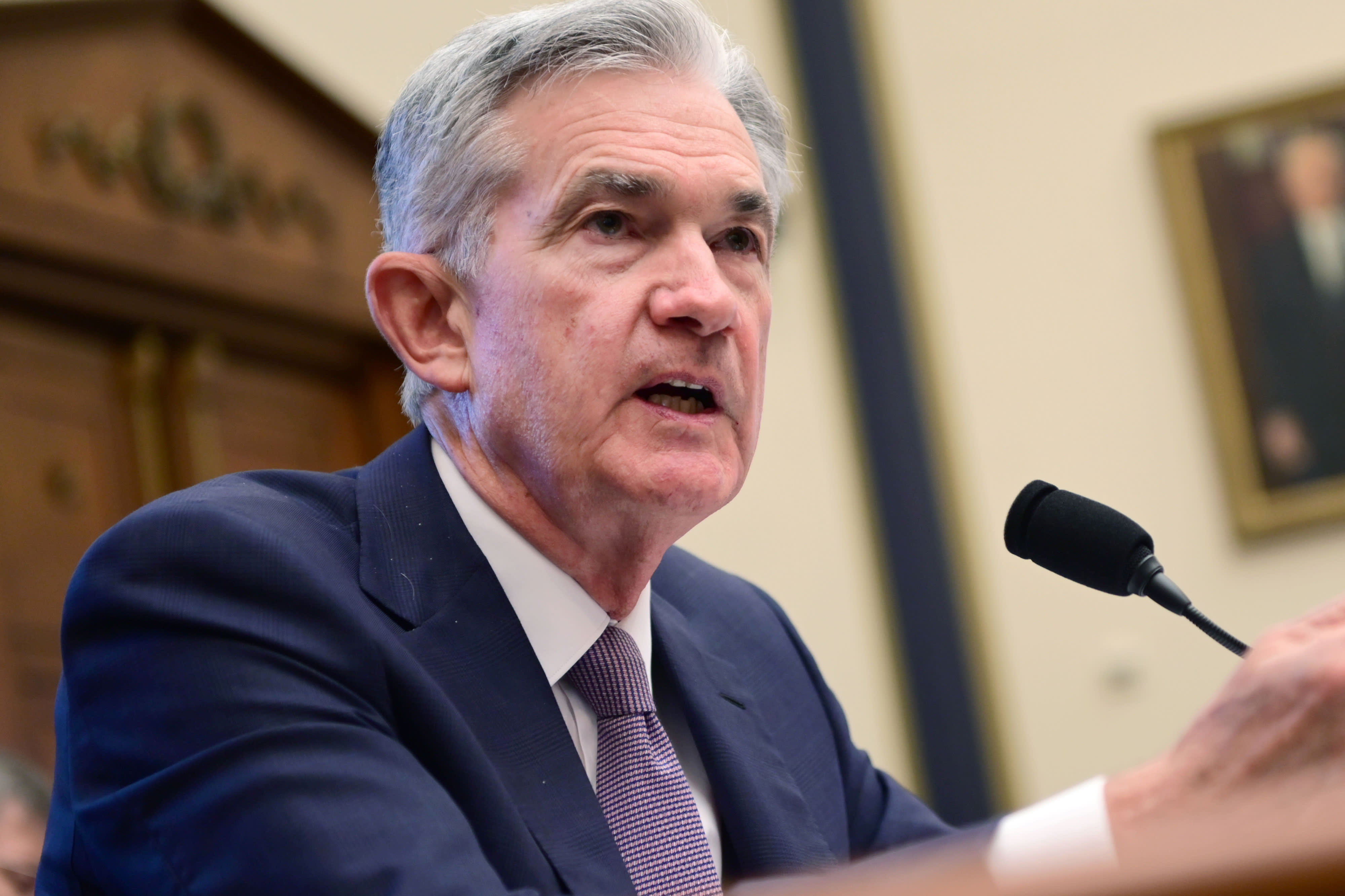Federal Reserve Chairman Jerome Powell testifies during a House Financial Services Committee hearing on “Monetary Policy and the State of the Economy” in Washington, July 10, 2019.
Erin Scott | Reuters
All eyes in the financial world turned to Capitol Hill this week as Federal Reserve Chair Jerome Powell gave his semi-annual testimony. In his opening statement Powell said, “It appears that uncertainties around trade tensions and concerns about the strength of the global economy continue to weigh on the U.S. economic outlook. Inflation pressures remain muted.”
What the markets heard was, “Ice cream for breakfast! Candy for everyone!”
The markets clearly believe a rate-cut regime is just around the corner, but is that, in the long-run, the best for the economy?
Pundits assert a rate cut is needed as “insurance” against a potential downturn in the economy foretold by the ongoing yield curve inversion. Although the widely watched 2- to 10-year part of the curve is still positive (though narrowing and now about 20 basis points) the 3-month T-bill has yielded more than the 10 year T-note for seven consecutive weeks after briefly inverting in March. The last nine recessions have been preceded by yield curve inversions. Yet over that time there have been ten yield curve inversions. In 1965/66 the yield curve inverted and there was not a recession immediately following.
History does not repeat itself, but there are similarities to today. Powell may be well advised to follow the path of his predecessor, William McChesney Martin, who stood firm against a president demanding monetary policy easing, and ultimately Chair Martin presided over the longest economic expansion in US history up to that time.
Presently, prices are stable and we are effectively at full employment: the dual mandate of the Fed. So why is Powell being accosted by the President and the markets demanding rate cuts? Shouldn’t we throw a parade and declare victory?
‘Crash and burn’
There are limits to monetary policy, as Powell noted when questioned by Rep. Hollingsworth this morning. Fiscal policy is needed to create growth and inflation. The president seems to measure the economy by the stock market, and the markets want low interest rates. When yield is scarce, there are no alternatives to stocks for investment, and as we all know, as demand increases, so do prices. Thus, lowering rates naturally leads to repricing the markets higher. The President has said that if Fed didn’t raise rates then the Dow would be up as much as 10,000 points. Honestly, that’s probably a pretty good guess – we would likely see a bubble develop and stocks trade at 25 times earnings. But bubbles burst. And as a long-term investor, I would much rather see slow and steady growth tied to earnings and balance sheet strength than a fast crash and burn.
History gives Powell one interesting precedent. In 1965, unemployment stood at 4.0% and inflation was 1.6%. In May of that year, then Fed Chair William McChesney Martin made a speech decrying a regime of “perpetual deficits and easy money” as creating an environment that could produce a bubble like that of the 1920s. President Johnson was furious, and in June asked his Attorney General Nicholas Katzenbach if he could fire Martin. (The answer, as repeated by Powell this week was “nope”.)
The yield curve inverted in December of 1965 with the 1-year T-note yielding more than the 10-year yield. The 90-day T-bill would soon follow. Faced with low unemployment, low inflation, and a hostile President who wanted lower rates, McChesney Martin advocated in December’s Fed meeting to raise rates. And the board voted 4-3 to do so.
Johnson’s anger reached a new level and on December 6, Martin flew to Texas to meet with the President. The often repeated and never denied legend is that when President Johnson and Chair Martin returned to Johnson’s ranch, the President physically assaulted Martin, pinning him up against the wall and demanding a change in policy.
Martin did not relent.
Creating a bubble
The yield curve remained inverted through 1966. A credit crunch ensued in August, leading to a decline in the Fed Funds rate, and at the end of the year, Martin’s Fed lowered the discount rate back to the mid-1965 levels. Yet the recession did not come. Indeed, inflation picked up to 2.6% and unemployment dropped to 3.8%. The yield curve moved positive in early 1967, and when a recession finally came (recessions will always come) in 1970, Chair Martin had presided over the longest economic expansion in U.S. history to date.
There are salient differences in the economy of 1966 to today, not the least that per capita GDP, in real terms, is roughly four times larger. Companies were aggressively expanding capital expenditures in 1966 in spite of rising rates then, while they are continuing to delay capex today in spite of declining rates. Yet, the central lesson of 1966 might be relevant: The Fed should remain independent, and regardless of pressure from the markets, from corporate America, from the President, and now from the punditry, follow the data for the best long-term interests of the economy and the country.
My concern (not prediction, but concern) is that a July rate cut in the face of a still healthy economy will create the exuberance and bubbles from which crashes, and crises, arise. Rather than expecting monetary stimulus to generate more business investment, it’s more realistic to think that interest-rate cuts will cause higher asset prices and more debt. Recessions are caused by financial imbalances and a rate cut could be the trigger for a recession rather than insurance against it.
We all want candy. But Uncle Jay might need to keep the jar locked up for our own good.
